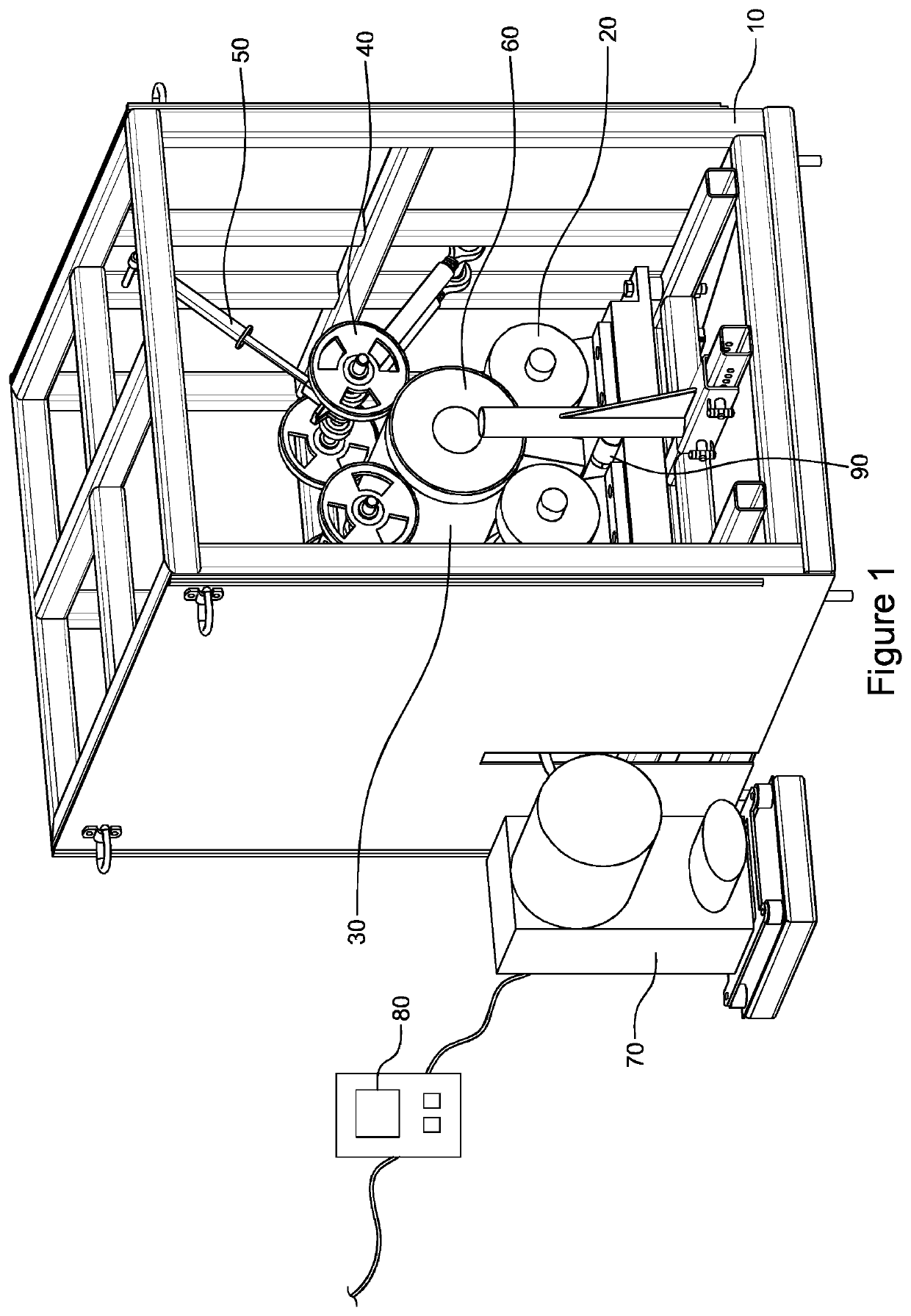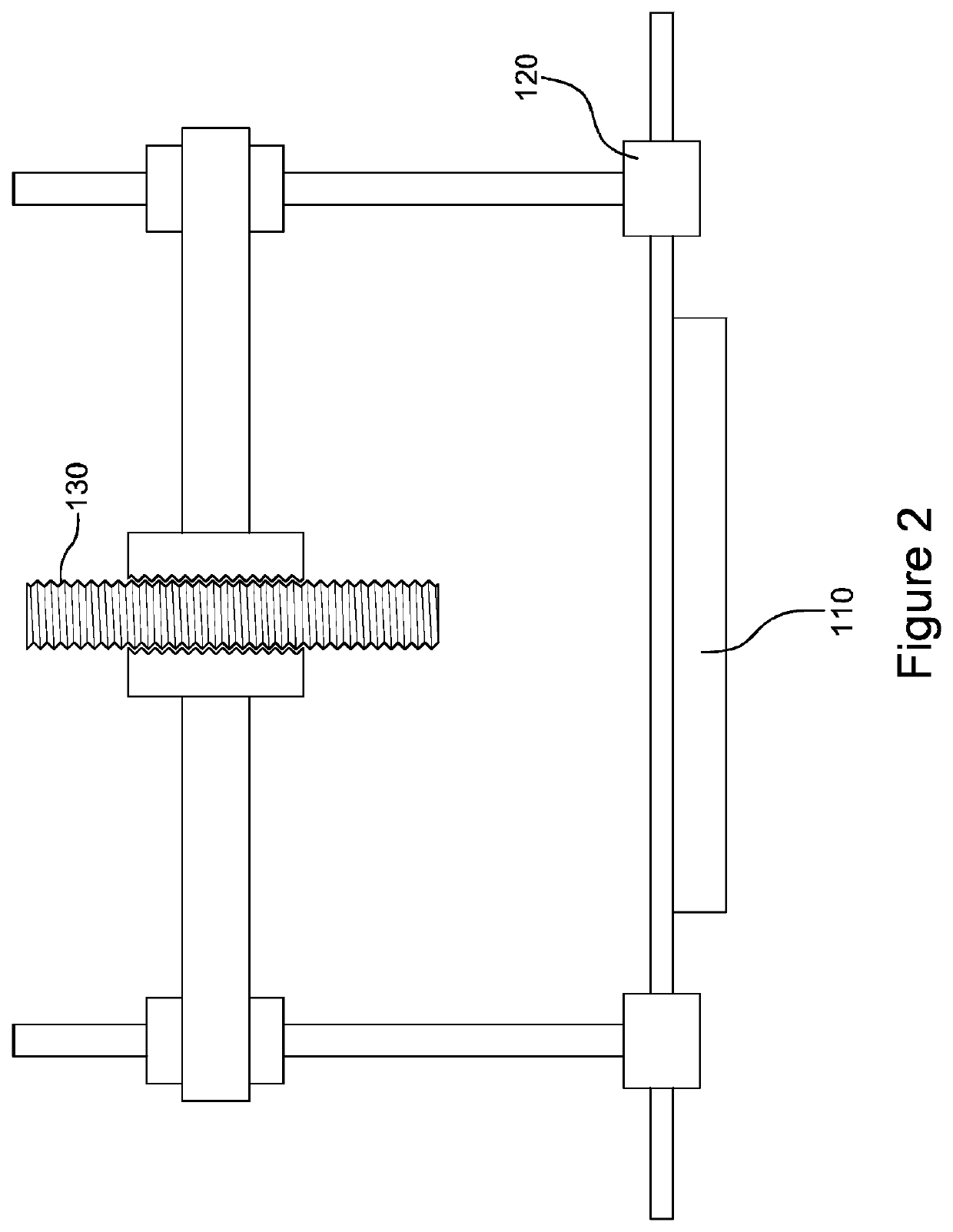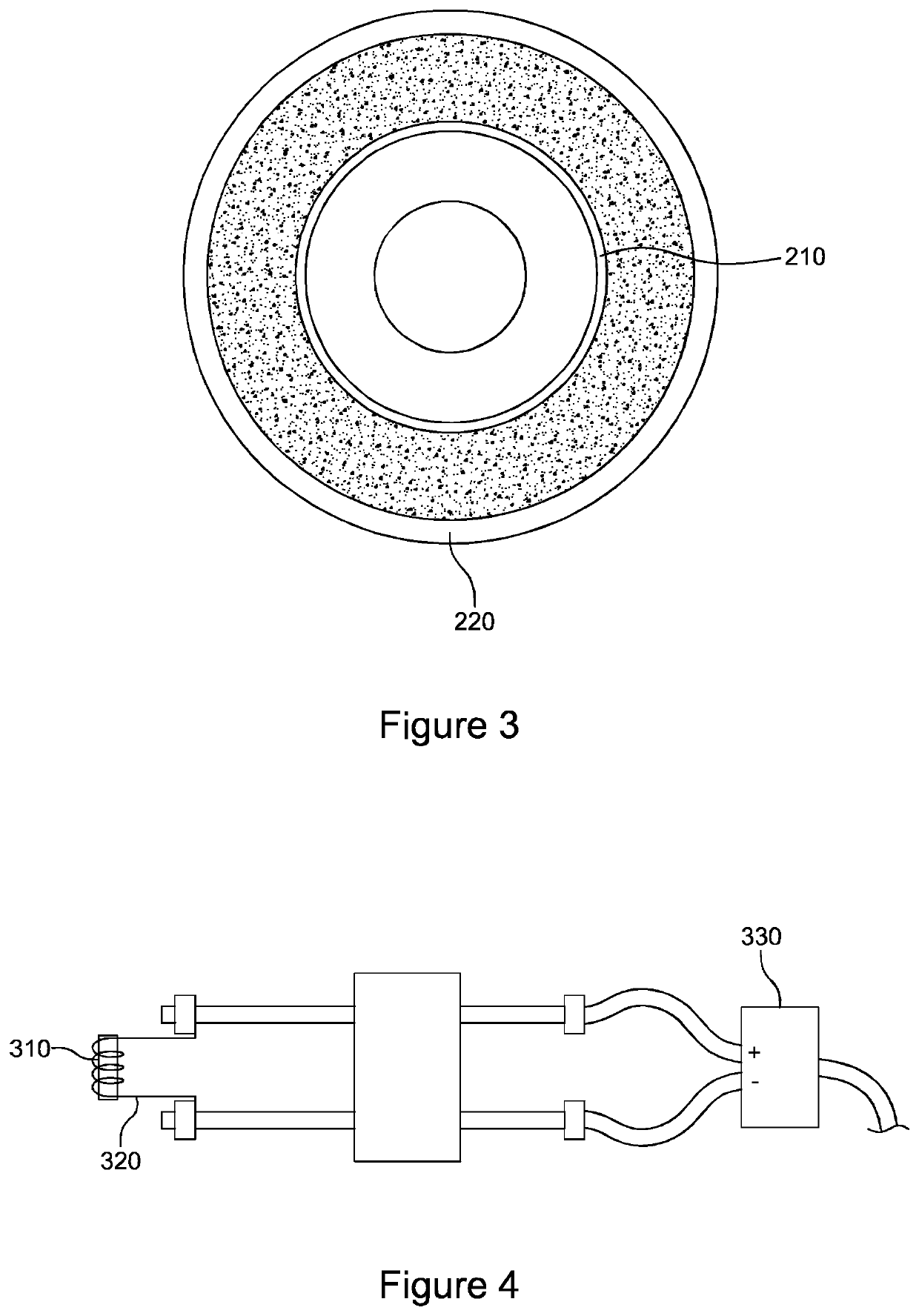Composition for producing corrosion resistant alloy clad metal pipes
- Summary
- Abstract
- Description
- Claims
- Application Information
AI Technical Summary
Benefits of technology
Problems solved by technology
Method used
Image
Examples
example 1
[0079]An exothermic mixture containing iron oxide (Fe2O3), calcium (Ca) and aluminum (Al), and alloying metals of chromium (Cr), nickel (Ni), iron (Fe), molybdenum (Mo), silicon (Si), and manganese (Mn) was loaded to the inside of the pipe by the BPS method while the pipe was in rotation at approximately 250 RPM (˜8 g). Afterward, the RPM was raised to 1150 RPM (˜185 g) and the mixture was ignited. Shortly after the completion of the reaction, the pipe was cooled by spraying water.
[0080]Upon the ignition and reaction, the mixture formed molten CRA of stainless steel 316L composition and a molten slag of oxides (CaO and Al2O3). Owing to the large difference in specific gravities between the CRA and the slag, the CRA was deposited to the inner wall of the X60 backing pipe with the slag on top. Shortly after the completion of the reaction, the pipe was cooled by spraying water from both inside and outside and slag was removed using a separate mechanical operation. Examination of the cr...
example 2
[0081]An exothermic mixture containing iron oxide (Fe2O3), chromium oxide (Cr2O3), calcium (Ca) and aluminum (Al), and alloying metals of chromium (Cr), nickel (Ni), iron (Fe), molybdenum (Mo), silicon (Si), and manganese (Mn) was loaded to the inside of the pipe by the paper tube (PT) method. Afterward, the RPM was raised to 1150 RPM (˜185 g) and the mixture was ignited. Shortly after the completion of the reaction, the pipe was cooled by spraying water.
[0082]Upon the ignition and reaction, the mixture formed molten CRA of stainless steel 316L composition and molten slag of oxides (CaO and Al2O3). Owing to the large difference in specific gravities between the CRA and the slag, the CRA was deposited to the inner wall of the X60 backing pipe with the slag on top. Shortly after the completion of the reaction, the pipe was cooled by spraying water from both inside and outside and slag was removed using a separate mechanical operation. Examination of the cross sections of the cladded p...
example 3
[0083]An exothermic mixture containing iron oxide (Fe2O3), calcium (Ca) and aluminum (Al), and alloying metals of chromium (Cr), nickel (Ni), iron (Fe), molybdenum (Mo), silicon (Si), and manganese (Mn) was loaded to the inside of the pipe using the RPM variation method. The powders were tumbled using an RPM that generates a gravitational force of about 0.5 g for 30 seconds. The RPM is then gradually increased to generate a gravitational force of 4 g with about 5 minutes taken to transition from 0.5 g to 4 g. Afterward, the RPM was raised to 1150 RPM (˜185 g) and the mixture was ignited. Shortly after the completion of the reaction, the pipe was cooled by spraying water.
[0084]Upon the ignition and reaction, the exothermic mixture forms molten CRA of stainless steel 316L composition and molten slag of oxides (CaO and Al2O3). Owing to the large difference in specific gravities between the CRA and the slag, the CRA was deposited to the inner wall of the X60 backing pipe with the slag o...
PUM
| Property | Measurement | Unit |
|---|---|---|
| Mass | aaaaa | aaaaa |
| Mass | aaaaa | aaaaa |
| Mass | aaaaa | aaaaa |
Abstract
Description
Claims
Application Information
 Login to view more
Login to view more - R&D Engineer
- R&D Manager
- IP Professional
- Industry Leading Data Capabilities
- Powerful AI technology
- Patent DNA Extraction
Browse by: Latest US Patents, China's latest patents, Technical Efficacy Thesaurus, Application Domain, Technology Topic.
© 2024 PatSnap. All rights reserved.Legal|Privacy policy|Modern Slavery Act Transparency Statement|Sitemap



